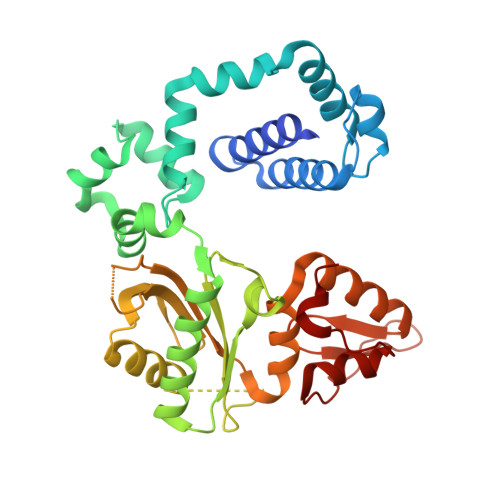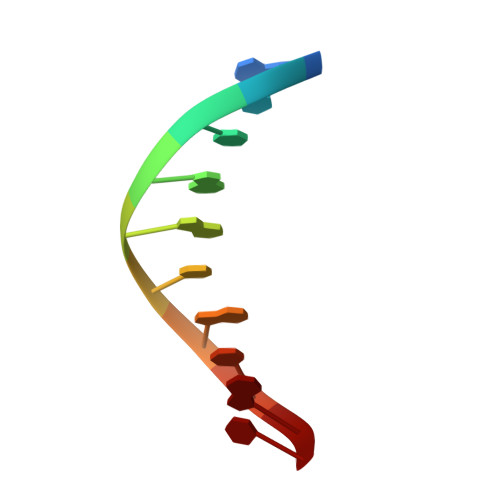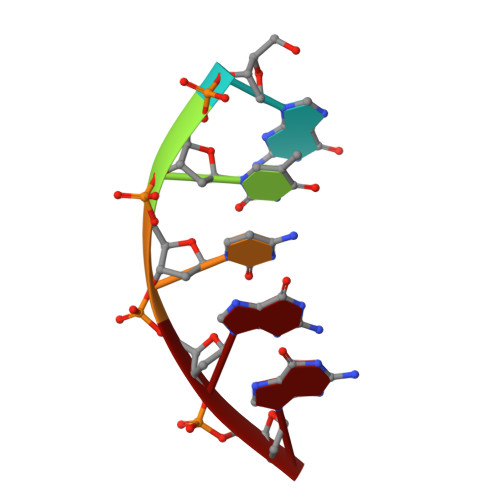The E295K Cancer Variant of Human Polymerase beta Favors the Mismatch Conformational Pathway during Nucleotide Selection.
Eckenroth, B.E., Towle-Weicksel, J.B., Sweasy, J.B., Doublie, S.(2013) J Biological Chem 288: 34850-34860
- PubMed: 24133209
- DOI: https://doi.org/10.1074/jbc.M113.510891
- Primary Citation of Related Structures:
4M9G, 4M9H, 4M9J, 4M9L, 4M9N - PubMed Abstract:
DNA polymerase ¦Â (pol ¦Â) is responsible for gap filling synthesis during repair of damaged DNA as part of the base excision repair pathway. Human pol ¦Â mutations were recently identified in a high percentage (¡«30%) of tumors. Characterization of specific cancer variants is particularly useful to further the understanding of the general mechanism of pol ¦Â while providing context to disease contribution. We showed that expression of the carcinoma variant E295K induces cellular transformation. The poor polymerase activity exhibited by the variant was hypothesized to be caused by the destabilization of proper active site assembly by the glutamate to lysine mutation. Here, we show that this variant exhibits an unusual preference for binding dCTP opposite a templating adenine over the cognate dTTP. Biochemical studies indicate that the noncognate competes with the cognate nucleotide for binding to the polymerase active site with the noncognate incorporation a function of higher affinity and not increased activity. In the crystal structure of the variant bound to dA:dCTP, the fingers domain closes around the mismatched base pair. Nucleotide incorporation is hindered because key residues in the polymerase active site are not properly positioned for nucleotidyl transfer. In contrast to the noncognate dCTP, neither the cognate dTTP nor its nonhydrolyzable analog induced fingers closure, as isomorphous difference Fourier maps show that the cognate nucleotides are bound to the open state of the polymerase. Comparison with published structures provides insight into the structural rearrangements within pol ¦Â that occur during the process of nucleotide discrimination.
Organizational Affiliation:
From the Department of Microbiology and Molecular Genetics, University of Vermont, Burlington, Vermont 05405 and.





















